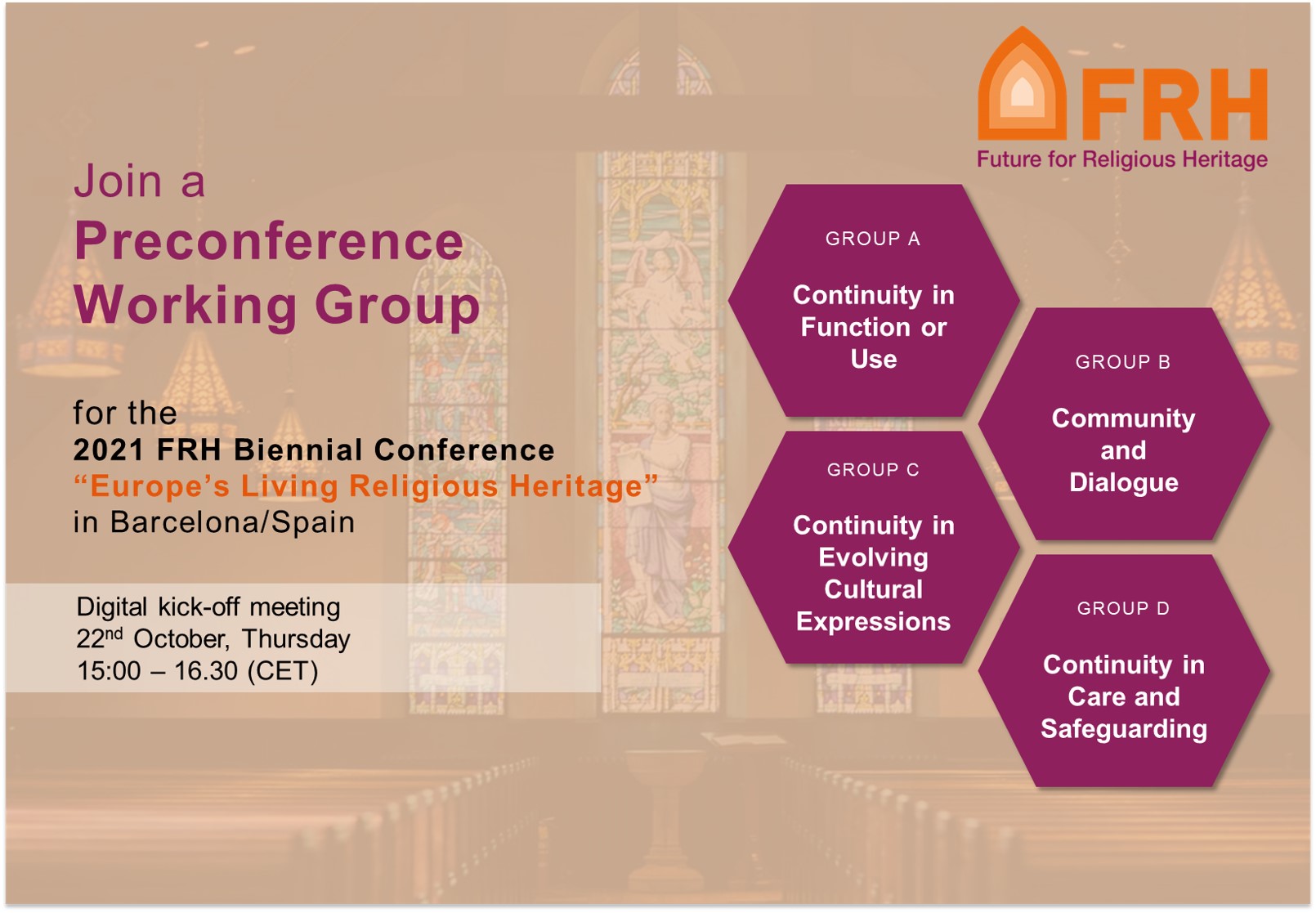The working groups will bring together FRH members, experts in the field and students, in order to have a comprehensive perspective and rich exchange on the four conference sub-themes.
The aim of each group is to explore each theme and produce an output document that will be shared at each respective hybrid event during the FRH Biennial Conference.
Registration for the working groups is now closed, but if you would still like to participate, please contact us at info@frh-europe.org
GROUP A: Continuity in Function or Use
Co-coordinators – Lilian Grootswagers and Henrik Lindblad
This working group focuses on heritage values of religious heritage and how they can help us to define perspectives for continuing use.
How to define the function of religious heritage? Is it strictly religious or is there a wider perspective? Can there be continuity if heritage changes from religious to secular use? How to keep track of the “spirit” of the place – “genius loci”? And what about how to combine religious and shared use in one building? Are there limits to the kind of secular use?
GROUP B: Community and Dialogue
Coordinator – Susanne Urban
This working group will reflect on the ownership and religious use of heritage spaces and places. They will address several issues and will also consider cultural respect and the way in which places are interpreted and presented.
How do we define a community? As a statutory corporation like a local Jewish or catholic community? Is a community only shaped by its enlisted members or also by other people with the same background, the neighbours living in the vicinity and virtual “likers” who care?
How can these communities be empowered to participate in administration, preservation, public and politics? How can their voices be heard?
Regarding the change of function, how is the former use mirrored and shown, what shall be taken into consideration when places change? If a place and space is owned by a religious entity and at the same time is living religious heritage, attractive for tourists – what balance must and shall be found?
GROUP C: Continuity in Evolving Cultural Expressions
Coordinator – Jan Jaspers
This working group will focus on the relationship between religious heritage and art. Throughout the ages, people have expressed their religion and faith with different art forms: architecture, music, literature and storytelling, painting, plastic arts etc.
Nowadays a lot of these artistic expressions are disconnected from the religious context and are presented in museums or concert halls. Does it make sense to bring them “home again” and present them “in situ”, like recently was suggested by the director of the Uffizi in Firenze? How can we take care of the musical (written and oral) traditions? What about organs and bells that are integrated in a lot of religious buildings? Do they have a profane vocation as concert instruments or are they just meant for worshipping? And what about contemporary art and religion? Can contemporary artists continue the historical relationship with religion or is there a gap between both?
GROUP D: Continuity in Care and Safeguarding
Coordinator – Jennie Hawks
In this working group, the focus will be on the tangible maintenance of heritage, without losing sight of the different interpretations that can influence its process. We will focus our reflections on 5 points based on the following questions:
- What is it the aim of heritage conservation: safeguarding fabric, tangible/intangible values, or community/continuity? Different visions on restoration, preservation or taking care of heritage? Are these differences connected to religions or to wider cultural traditions?
- Should we opt for daily maintenance or wait for restoration?
- Can the protection of heritage lead to its slow death and what are the mechanisms causing this?
- What reasons and consequences are behind the demolition of heritage that is no longer in use?
- Museums and how can they work in religious heritage?






Follow us: